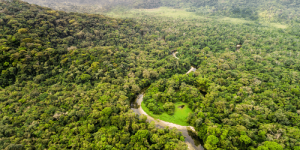As global leaders focus on conserving biodiversity in the face of rapid development, the newly launched Nature Conservation Index (NCI) provides critical insights into the effectiveness of conservation efforts across 180 countries. Developed by BioDB.com in collaboration with the Goldman Sonnenfeldt School of Sustainability and Climate Change, Ben-Gurion University of the Negev, the NCI uses 25 key indicators to evaluate protected area coverage, species at risk, conservation laws, and future trends.

The Nature Conservation Index is a data-driven analysis of each country’s progress in balancing conservation and development. The NCI is designed to help governments, researchers, and organisations identify areas of concern and improve conservation policies for long-term biodiversity protection.
“Severely overlooked by mass media and widely ignored on social media, I wondered how I could grab attention: how can I address the urgent issues of biodiversity loss, animal extinction, and climate change and reach the general public and policymakers?” said Assaf Levy, BioDB’s founder and CEO. “The key, I realised, is to simplify the hard scientific data into digestible, bite-sized informational nuggets.”
Key Findings from the Nature Conservation Index
The NCI evaluates conservation efforts using four pillars supported by 25 performance indicators spanning land management, threats to biodiversity, capacity and governance, and future trends. The land management pillar assesses how effectively countries conserve terrestrial and marine ecosystems through protected area coverage and habitat fragmentation measures. Threats to biodiversity are evaluated using nine indicators that examine the proportion of species at risk, the extent of habitat protection, and the impact of invasive species.
The capacity and governance pillar looks into countries’ resources, policies, and systems for managing conservation, including their participation in international agreements and levels of political stability. The future trends pillar offers a forward-looking assessment of countries’ abilities to meet long-term conservation challenges, incorporating metrics like the Environmental Performance Index (EPI).
Together, these pillars highlight the importance of strategic planning in biodiversity protection and emphasise the need for countries to align their conservation efforts with global sustainability goals.
NCI Highlights Global Biodiversity Conservation Challenges and Imperatives in Key Regions
The latest findings from the Nature Conservation Index (NCI) cast a stark spotlight on the intensifying biodiversity crisis engulfing critical regions across the globe. Despite concerted conservation efforts, these areas grapple with mounting challenges that threaten their rich ecological heritage and underscore an urgent need for action.
In Africa, a continent renowned for its unparalleled biodiversity, relentless deforestation, rampant pollution, and rapid urbanisation are eroding natural habitats at an alarming rate. While significant resources have been channeled into protected areas and wildlife preservation, these measures are struggling to keep pace with habitat fragmentation, industrial development, and a troubling decline in species populations. The urgency to safeguard Africa’s diverse ecosystems has never been more pronounced.
South and Central America, custodians of vital ecosystems like the Amazon rainforest, are confronting the peril of large-scale deforestation. This not only poses a severe threat to regional biodiversity but also jeopardises global climate stability. Illegal wildlife trade and unsustainable land-use practices further imperil these fragile ecosystems, rendering immediate and effective conservation strategies imperative.
In Southeast Asia, celebrated for its extraordinary array of flora and fauna, alarming rates of deforestation and illegal wildlife trade exert immense pressure on natural habitats. The region’s rapid urbanisation and industrial expansion contribute significantly to environmental degradation, threatening the intricate tapestry of its ecological diversity.
These regions also face persistent threats from poaching, habitat degradation, and escalating human-wildlife conflicts, necessitating strengthened protection strategies. Iconic species teeter on the brink of extinction due to deforestation and the devastating impacts of climate change, highlighting the critical need for more aggressive conservation measures.
Despite notable strides in certain areas, immense pressures from burgeoning tourism, habitat fragmentation, and pollution present ongoing challenges to environmental recovery. The NCI emphasises that aligning conservation efforts with global sustainability goals is not just beneficial but essential. It calls for strategic planning and international collaboration to address the biodiversity crisis effectively.
This compelling report serves as a clarion call to the global community: the time for decisive action is now. Protecting these key regions is not only vital for preserving their unique ecological identities but also for maintaining the planet’s overall environmental health and resilience.
